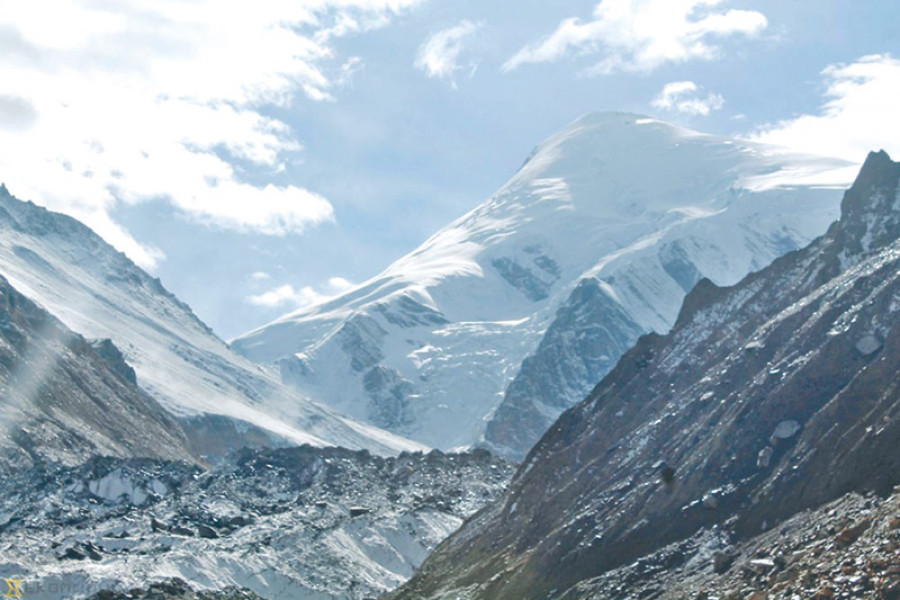Columns
Blaming it all on climate change
Nepal should invest in research on extreme event attribution to climate change and keep records of all climate variables.
Subash Pandey
A good understanding of a problem depends on one’s ability to ask the right questions. Asking the right question is paramount when it comes to extreme natural events and attributing them to climate change. Moreover, there is this saying: A problem well-defined is a problem half-solved.
One of the greatest climate scientists and communicators, Professor Katherine Hayhoe shared on Twitter: “‘Was it caused by climate change?’ is the most common question when we hear about an extreme event. But when it comes to hurricanes, that’s the wrong question. The right one is, ‘How much worse did climate change make it?”’ Professor Hayhoe refers to hurricanes here, but this is equally applicable to other extreme events like flash floods, heatwaves, large-scale landslides, forest fires, and heavy downpours that strike Nepal every year.
Attributing extreme events to climate change
In Nepal or elsewhere, attributing all these extreme events to climate change has become a norm for politicians, bureaucrats, and contractors to escape from their responsibilities and hide their incompetencies. Climate change might have accelerated those extreme events, but the root cause of disasters from extreme events could be the construction of roads in hilly regions without proper consultation with technicians, poor management of forests, not abiding by building codes and land-use planning, or events stemming from weak planning and policies.
Climate attribution science, also known as extreme event attribution (EEA), is a new branch of climate science that tries to address whether climate change has influenced “the likelihood and/or severity of individual extreme events” based on longer observational records and advanced climate models. But there are a lot of challenges for this new science to evolve, especially in countries like Nepal, where there is a lack of trustworthy historical data on climate change.
We have enough evidence to say that anthropogenic activities are responsible for the observed 1.2 degrees Celsius rise in the global average temperature. In Nepal, the rising temperatures are rapidly melting glaciers in the Hindukush Himalayan region, increasing the threat of Glacial Lake Out-Burst Floods (GLOFs). Rainfall has become too erratic and unpredictable here. However, we can’t confidently link extreme natural events and resulting disasters to only climate change because of its complexities and other additional management factors responsible for it.
Application of EEA
It is difficult to find research; there’s not even one from Nepal on extreme event attribution to climate change on google scholar. Lack of research on EEA might be a consequence of poor records of historical and observational climate data in addition to lack of climate scientists who focus on advanced climate models for their research in Nepal. However, we can learn from the application of extreme event attribution in other countries, especially the US.
The US is the most politically divided country regarding climate change, and people are sceptical of linking extreme events to climate change. As many as 43 percent of total Americans deny anthropogenic climate change at all. In this situation, EEA has become instrumental in answering the question of the contribution of climate change to extreme events like hurricanes, mega-drought, and large wildfires across the western US forests. In recent decades, forest fire in the US has been enabled by multiple factors, including poor forest management (fire suppression), human settlements, natural climate variability, and human-caused climate change.
Extreme event attribution research shows that anthropogenic climate change accounted for an almost 55 percent increase in fuel availability by increasing aridity and contributed to an additional 4.2 million hectares of wildfires between 1984-2015. In the absence of human-caused climate change, this additional forest fire area would have been avoided. Similarly, another study finds that anthropogenic trends in “temperature, relative humidity, and precipitation” estimated from 31 climate models accounted for 47 percent of the 2000-2018 mega-drought severity in the US.
Moreover, there is another significant study conducted in West Africa. Using a process-based crop model, one study shows that anthropogenic climate change caused regional average yield reductions of 10-20 percent, and 5-15 percent for millet and sorghum, respectively, over the period 2000-2009. Over the same period, the yield reduction accounted for $2.33-$4.02 billion loss for millet and $0.73-$2.17 billion, for sorghum. The authors of this study argue that similar research and findings could be a basis for the loss and damage, which was the primary agenda of many poor countries at COP 27 in Egypt this November.
What lessons can Nepal learn?
Unfortunately, one has to cite findings on extreme event attribution from other parts of the world as there is no such study in Nepal. Therefore, Nepal should first invest in research on EEA and keep a good record of all climate variables (not only precipitation and temperatures).
Similarly, responding to how anthropogenic climate change has contributed to extreme events in Nepal would not only help make our politicians, bureaucrats, and developmental contractors transparent and accountable for their work but also strengthen the position of countries like Nepal at the annual COP. The main agenda of developing countries at future COP will be the operationalisation of the loss and damage fund established under the UNFCCC at COP 27 in Egypt. Developed countries led by the US at COP 26 in Glasgow refused separate funding for loss and damage, citing insufficient scientific evidence for such a claim. Research on EEA will support developing countries in quantifying the loss and damage.
We hear many activists and scholars in Nepal focusing more on climate finance, especially for loss and damage. Along with climate finance, they also need to raise voices on strengthening the research capacity that would answer questions related to climate change and extreme events, which would make our claim for loss and damage robust.
Moreover, mainstream media reporting on such events should not hype the extreme events just by linking them to climate change. While interviewing climate scientists or reporting on extreme events, they should stop asking, “Did climate change cause this specific extreme event?” as the answer to such a question will always be “no”. Rather they should ask, as Professor Katherine Hayhoe asks, “How much worse did climate change make extreme events?” To answer this question, Nepal needs to invest more in climate attribution research.




 16.12°C Kathmandu
16.12°C Kathmandu















